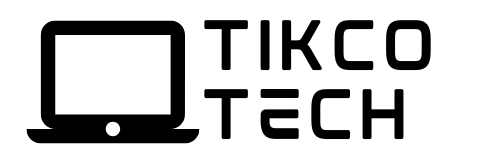In the rapidly evolving field of artificial intelligence (AI), programming languages play a key role in helping developers build powerful and innovative AI applications. As we dive deeper into 2024, AI programming languages will become increasingly important, providing developers with a wide range of tools and frameworks to unlock the full potential of AI technology.
Python: the leading programming language for artificial intelligence
Python is the dominant programming language for artificial intelligence. Known for its simplicity, versatility and rich libraries, Python remains the top choice for AI developers around the world. Its seamless integration with popular AI frameworks such as Tensor Flow and Py Torch further strengthens its position at the forefront of AI development.
R: statistical calculations and graphics
Despite Python’s dominance, R still plays an important place in artificial intelligence programming, especially in the areas of statistical computing and graphics. With its powerful toolset for data analysis and visualization, R remains the first choice for statisticians and data scientists working on artificial intelligence projects that require complex analyses.
Julia: a fast, powerful computer
Julia is emerging as a promising candidate in the field of artificial intelligence development, offering unparalleled speed and performance. Julia’s syntax is similar to mathematical notation, simplifying complex algorithms and calculations, making it ideal for advanced artificial intelligence applications.
Java: versatility and extensibility
Known for its versatility and scalability, Java maintains its relevance in the field of artificial intelligence. With its strong ecosystem and enterprise-level support, Java has found its place in artificial intelligence projects that require robustness and scalability, especially in large-scale deployments and enterprise solutions.
TensorFlow and PyTorch: Artificial Intelligence Development Frameworks
TensorFlow and PyTorch are cornerstone frameworks for artificial intelligence development, providing developers with tools for deep learning and neural network modeling. While TensorFlow has wide adoption and community support, PyTorch is gaining momentum for its dynamic calculation graph and easy-to-use interface.
MATLAB: Numerical Computing and Simulation
MATLAB remains the first choice for numerical computing and simulation in AI applications. With its rich set of mathematical functions and toolboxes, MATLAB enables engineers and researchers to easily prototype and deploy AI algorithms, especially in areas that require complex simulation and modeling.
Scala: Functional programming for artificial intelligence
Scala combines functional programming and object-oriented paradigms, making it an interesting choice for artificial intelligence development. With a strong emphasis on concurrency and immutability, Scala offers a unique approach to building scalable and resilient AI systems, especially in distributed computing environments.
####### Swift: Apple’s contribution to artificial intelligence
Supported by the Apple ecosystem, Swift has become a strong player in artificial intelligence development, especially in iOS and macOS applications. With its modern syntax and performance optimizations, Swift facilitates the seamless integration of AI capabilities across mobile and desktop platforms, opening new avenues for AI-driven experiences.
######## C++: Performance and efficiency
C++ remains indispensable for AI projects that require maximum performance and efficiency. With its low-level control and extensive libraries, C++ allows developers to unleash the full potential of hardware acceleration and optimize AI algorithms for maximum efficiency.
######### Go: simplicity and concurrency
Known for its simplicity and built-in concurrency support, Go has attracted attention in artificial intelligence development for its efficiency in handling parallel tasks. With its lightweight syntax and efficient runtime, Go is a pragmatic choice for building scalable and concurrent AI systems.
Finally
All in all, the 2024 AI programming language landscape offers a variety of options, each tailored to the specific needs and preferences of developers. From the versatility of Python to the performance of Julia, from the scalability of Java to Swift’s integration with the Apple ecosystem, developers have a wealth of choices to start their AI journey.
Other factors such as your project requirements, existing skills, community support, performance needs and compatibility with relevant frameworks and tools.
Which upcoming artificial intelligence programming languages are worth paying attention to?
Emerging languages such as Swift and Julia show promise in the field of artificial intelligence and signal potential advances and innovations in AI development.




